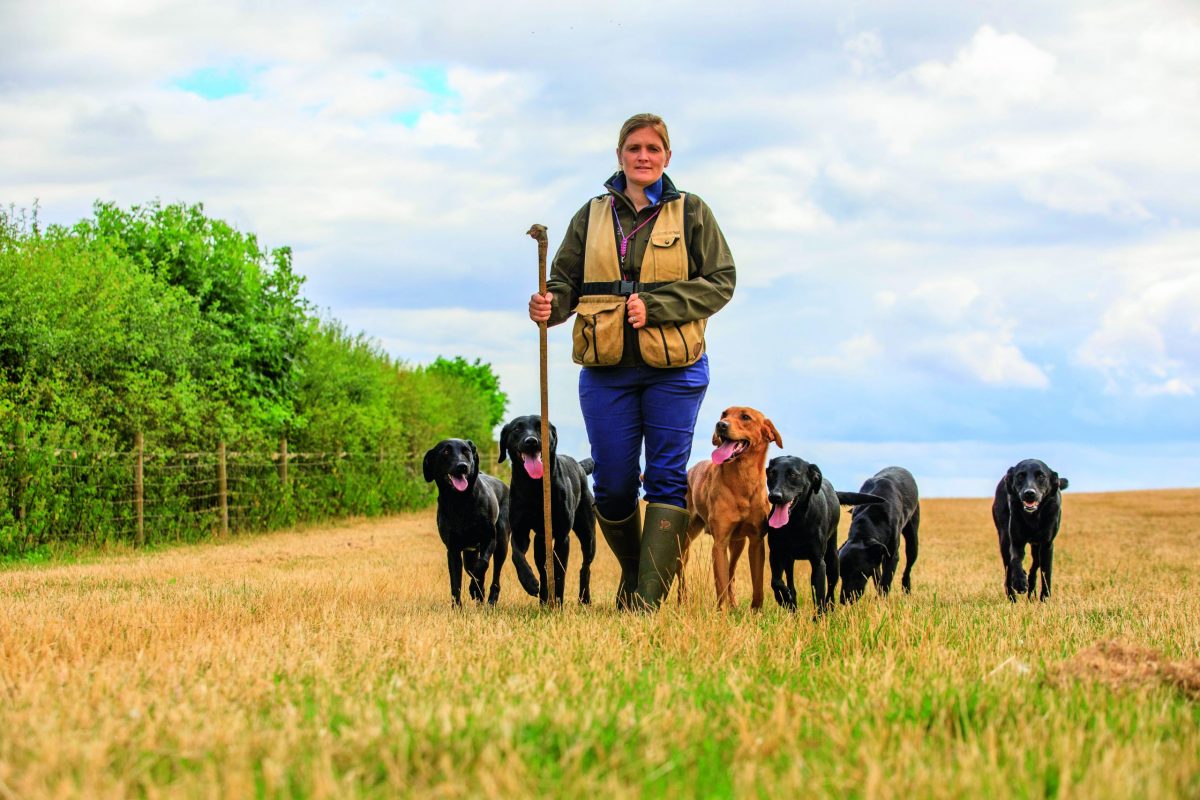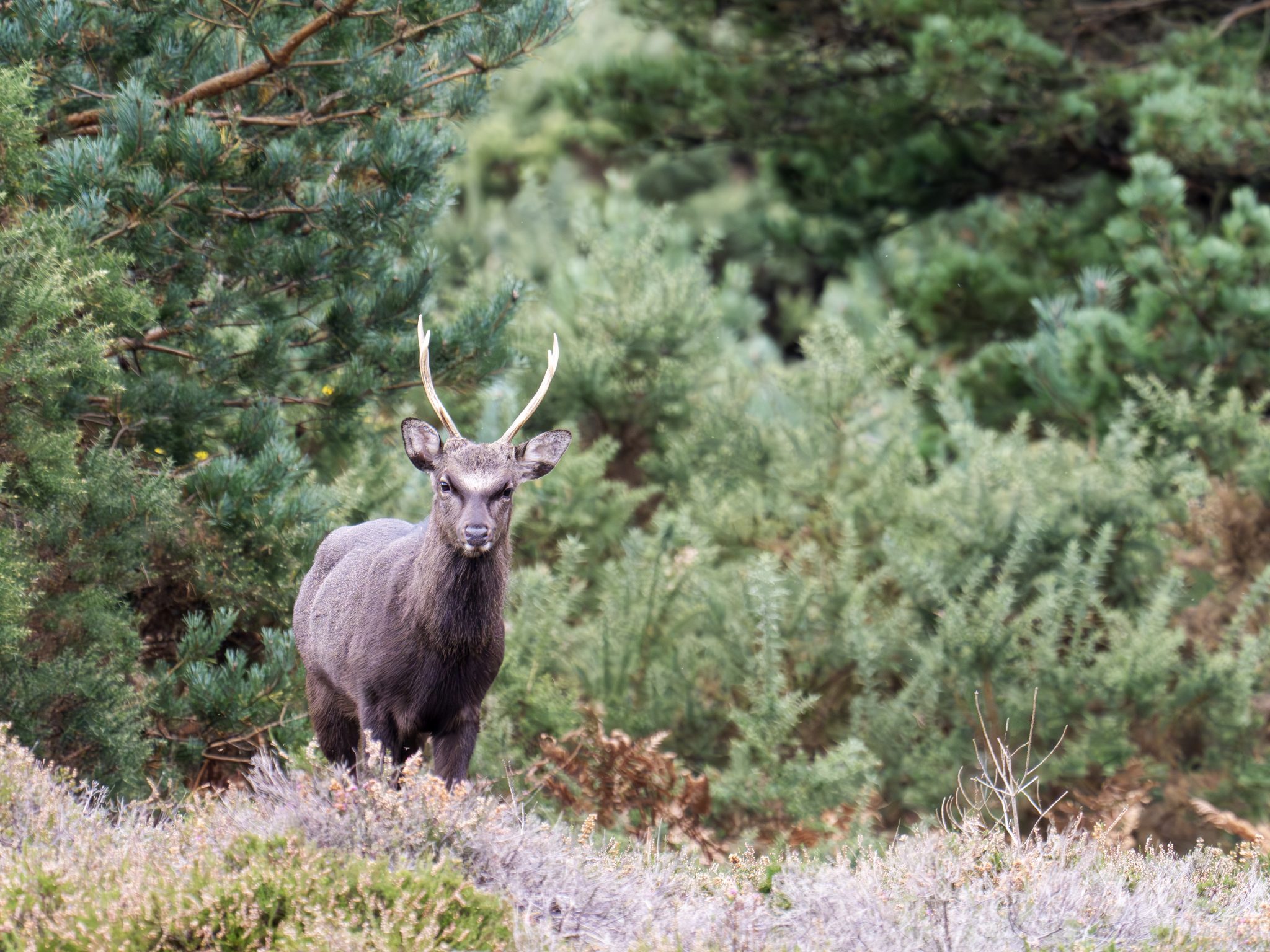Win CENS ProFlex DX5 earplugs worth £1,149 – enter here
Last-minute gundog training ahead of the new season

Ss we are nearing the start of the season, now is the time to make sure you are taking advantage of the long, light evenings and putting in some useful training sessions. The grouse season is only days away, with the partridge and pheasant seasons not far behind.
The first thing you need to do is be honest about what has not been brilliant either over the summer or towards the end of last season. Hopefully, by now, you have already started at least some drills to improve certain aspects of your dog’s work. Now is the time to fill in the gaps.
I start with the basics for all my dogs, no matter their level or age. These are so often overlooked for many reasons. First, they are rather boring. Not only for the dog, but for the handler as well. Walking up and down teaching heel is hardly the adrenaline-fuelled work most gundog trainers dream of. Standing with your dog next to you and simply asking it to sit while various distractions happen around you is again totally monotonous and dull.
However, imagine going through a whole shooting season and never having to repeat your recall command or remind your dog to stay at heel, or even shout profanities across the shooting field while your dog has other ideas about what the stop whistle means. The basics make up the core skills of any good gundog.
I start with some heelwork. For the younger dogs, I do this one-on-one to begin with. This makes it easier to correct any mistakes and for them to focus on me. It is important to know what you are training for and to be realistic with what your end goals are for your dogs. For example, it is unlikely that my older dogs will ever be heeling on their own during the season. They are used for heavy picking-up days and work as a pack.
Pack mentality
With several dogs at heel, I practise walking them as a group and, in this instance, they normally walk either side rather than all on one side. So this is a rare occasion where I allow the heelwork to essentially slip as all the dogs are not able to be right next to my left leg.
They normally walk in the same place and soon they understand how to walk as a pack as opposed to one-on-one. If you normally pick-up or go beating with a stick, practice walking with one.
Some dogs can be spooked by the noise of a stick or flag, so it is important to build their confidence
If you are training your dog to walk to heel for the beating line, then it is a good idea to get them used to walking to heel while you crack a flag. A lot of dogs do not like walking near a handler while they crack a flag. It is a loud, sharp noise and sometimes, especially if they have accidentally got in the way of the flag, they really do not like it.
Practice walking with the dog at heel on one side and your beating stick, flag or game carrier the other. If needed, use treats and reward every time you tap or crack the flag or stick. If the dog tries to pull out to the side, use a lead to begin with. With a young dog, in particular, take things like this slowly so their confidence is built and by the time they are actually working they are very comfortable.
The next job your dog will have is doing nothing. This is one of the hardest things to teach a dog, particularly a busy working dog. There are many reasons why a dog may need these skills in the shooting field. For a peg dog or picking-up dog, it is relatively obvious. They will have to sit through the drive without moving. However, a beating dog may often need to have the patience to sit and wait. If the keeper asks the line to hold or stand and tap, the dog may well be able to see the birds flushing but have to remain by your side. It is the same being on stop — you are simply required to stand and tap.
Between drives, there is nothing more irritating than a dog that runs around pestering other dogs, cocking their leg everywhere and stealing food, so teach your dog to sit. It is such a simple command that can be applied in so many different areas of
a dog’s life, not just a working day.
If your dog struggles with this, help the dog understand by using a platform of some sort. A simple raised bed, blanket or place board is absolutely fine. It is the same theory. It simply helps the dog to understand when they are on or off, so if the dog fidgets or wriggles they fall off.
Walk the dog back on and ask for a sit. Avoid using the words ‘sit’, ‘wait’, ‘stay’ or anything else that means remain where you are — mostly because it is a wasted word. If you have taught a solid sit command, the dog will not require an extra one.
Keep it simple
Some handlers insist that a wait, for example, means something separate, but the simpler you can keep your commands and training, the better. Nothing needs overcomplicating for the handler or dog.
Shape your sit command so from day one it means ‘remain in a sit until I release you’. In order to teach this you must always ensure the dog is released. This is the most common mistake people make. They ask a young dog to sit, reward it and then carry on doing something else. That means the dog moves as and when they please, which in turn teaches the dog to do that in other situations.
When you ask the dog to sit, leave your hand up so they can see by your visual signal that what they are doing is correct. You can then release and reward
Ask the dog to sit and leave your hand up so they can see by the visual signal you are giving that what they are doing is correct. If they stand up, resist the temptation to repeat the command over and over. Simply use your actions to put them back in a sit position and then use the verbal command along with praise.
The key to training a dog is setting them up to succeed. It is much easier to constantly praise and reward a dog than it is to correct or keep starting again. So if you know your dog normally starts to fidget after one minute, ask them to sit and time to 55 seconds, then release and reward. I release with an ‘OK’.
Before I release, I always reward the actual sit. Another common mistake is that the handler rewards and inadvertently releases the dog. This means that in future every time you reward the dog, it assumes it has finished. I reward the sit, but leave the dog in that position. It means that in future when I praise the dog, they don’t stop doing what they are doing. All the praise means is ‘good dog, that is exactly right’ and so they continue doing that action.
Recall is the final basic I like to try to tighten up at this time of year. Again, it is an extremely transferable skill and can be used in many situations. You may have sent your dog for a retrieve only to see another dog going for it or possibly, even more seriously, you may then spot a road or fence so you need the dog to come back. Recall is a case of setting up the dog to achieve. Slowly but surely increase the distractions.
The frustrating thing about recall is that something unexpected can undo some good work — for example, a deer surprising you by emerging from a hedge. For a young dog, it is a serious temptation and without any experience they may well chase and discover the fun that can be had in chasing game.
To try to prevent this, take your dog somewhere you know there is game scent and use a long line to begin with. Go over these basics where there is scent and keep drills simple so they achieve and you praise them. Using a long line will prevent them from getting it wrong, making it easier to succeed. Prevention is better than cure and success tends to breed success, so make sure that you are not practising failure on every walk or training session.
There may well be many more technical training drills you need to practice and proof, but without these pillars any gundog will go off the rails at some point.
Training with a long line where you know there is game scent is excellent for proofing your recall
Related Articles
Get the latest news delivered direct to your door
Subscribe to Shooting Times & Country
Discover the ultimate companion for field sports enthusiasts with Shooting Times & Country Magazine, the UK’s leading weekly publication that has been at the forefront of shooting culture since 1882. Subscribers gain access to expert tips, comprehensive gear reviews, seasonal advice and a vibrant community of like-minded shooters.
Save on shop price when you subscribe with weekly issues featuring in-depth articles on gundog training, exclusive member offers and access to the digital back issue library. A Shooting Times & Country subscription is more than a magazine, don’t just read about the countryside; immerse yourself in its most authoritative and engaging publication.







